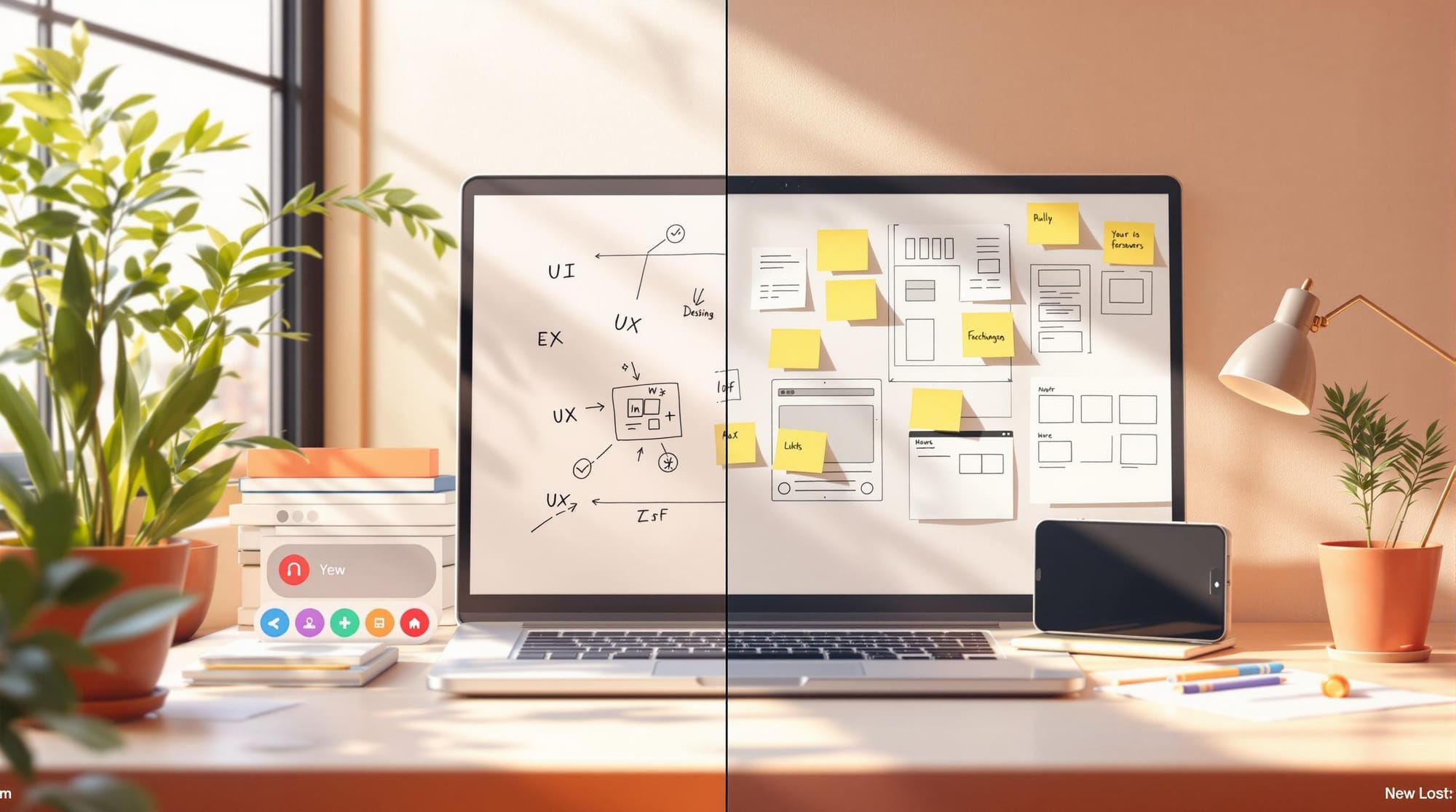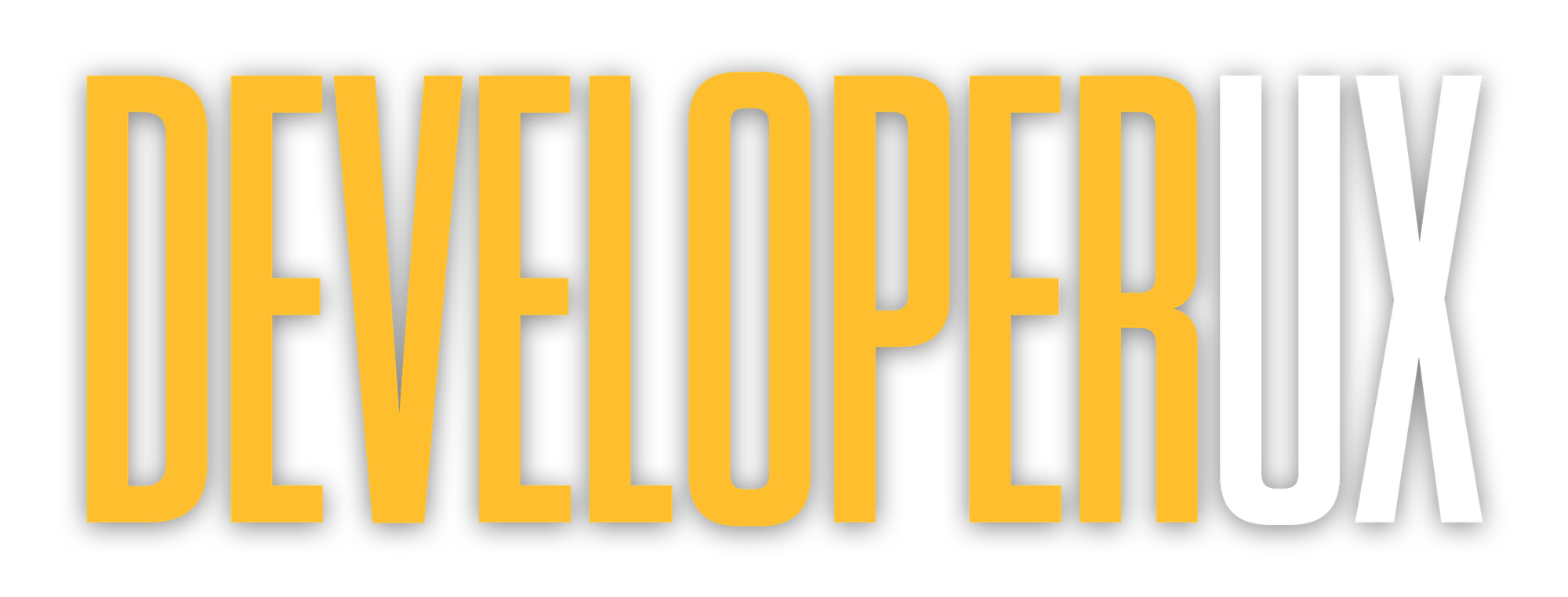UI vs UX Design: Key Differences Explained
Explore the essential differences between UI and UX design, their roles in product development, and how they work together to enhance user experience.

UI (User Interface) and UX (User Experience) design are two sides of the same coin, but they focus on different aspects of product development:
- UI Design: Handles the product's visual and interactive elements - how it looks and feels.
- UX Design: Focuses on the overall user journey - how it works and meets user needs.
Quick Comparison
| Aspect | UI Design | UX Design |
|---|---|---|
| Focus | Visual and interactive elements | User journey and experience |
| Key Tasks | Layouts, typography, color schemes | Research, wireframes, prototypes |
| Tools | Figma, Adobe XD | Miro, UserTesting |
| Success Metrics | Visual consistency, engagement | User satisfaction, task completion |
In short, UX ensures the product is functional and user-friendly, while UI makes it visually appealing. Both are essential for creating great digital products.
UX Design vs UI Design - What's The Difference?
UI Design Fundamentals
UI design is all about shaping the visual side of digital products. It focuses on creating interfaces that are visually appealing and easy to use. While UX design outlines the user’s path, UI design brings it to life through visuals and interactive elements.
UI Design Core Concepts
UI design revolves around building the visual and interactive components that define how users interact with a product. This includes:
- Layouts: Structuring content to guide user focus.
- Typography: Ensuring text is easy to read and matches the product’s tone.
- Color Schemes: Reflecting brand identity and enhancing usability.
These elements come together to create a visual system that feels intuitive and helps users navigate effortlessly.
A key focus of modern UI design is visual hierarchy - organizing elements so users know what to focus on first - and maintaining consistency. Interactive components like buttons, menus, and forms need to follow clear, recognizable patterns. This reduces the mental effort required from users and makes the interface feel seamless.
UI Designer Tasks
UI designers are responsible for turning UX plans into visually engaging designs. They collaborate with UX designers to ensure the visuals align with user needs. Their tasks often include:
| Task Category | Key Responsibilities |
|---|---|
| Visual Design | Crafting style guides, choosing color schemes, and designing typography systems. |
| Component Design | Creating buttons, icons, and other interactive elements. |
| Consistency | Ensuring all screens share a unified visual style. |
| Prototyping | Building detailed layouts and interactive prototypes. |
They also work with developers to ensure the designs are implemented accurately and function as intended.
Required UI Design Skills
UI designers need both technical know-how and creativity. Tools like Figma and Adobe XD are essential for creating and refining designs efficiently. Knowledge of typography and color theory helps them make decisions that improve usability and aesthetics.
Creating detailed style guides is another critical skill. These guides ensure the product’s design remains consistent while being flexible enough to evolve over time.
While UI design focuses on visuals and interactions, it complements UX design, which handles the overall user journey and experience.
UX Design Basics
While UI design focuses on a product's look and feel, UX design is all about shaping the overall experience for users. It ensures that interactions with digital products are smooth, intuitive, and user-focused.
Core Elements of UX Design
At its heart, UX design is about improving how users interact with products. Key elements include:
- User-Centered Design: Structuring content logically, creating user-friendly journeys, and making products accessible based on research.
- Research and Analysis: Investigating user behaviors, needs, and frustrations to inform design decisions.
- Improving Experiences: Designing interactions that meet user expectations while aligning with business objectives.
What UX Designers Do
UX designers are involved in every stage of product development, from research to implementation. Their work combines strategy with hands-on design.
| Phase | Responsibilities |
|---|---|
| Research | Conducting interviews, surveys, and usability testing |
| Planning | Building personas, journey maps, and organizing content |
| Design | Crafting wireframes, prototypes, and user flows |
| Testing | Running usability tests and refining designs |
| Implementation | Working closely with developers and UI designers |
To succeed, UX designers need a mix of technical skills, creativity, and teamwork.
Key Skills for UX Designers
Some of the most important skills for UX designers include:
- Research Techniques: Proficiency in both qualitative and quantitative methods.
- Organizing Information: Structuring complex systems into clear, user-friendly layouts.
- Tool Expertise: Familiarity with wireframing and prototyping software.
- Communication: Presenting ideas clearly and working well with teams.
- Problem-Solving: Identifying user challenges and addressing them effectively.
UX designers act as a bridge between users, developers, and stakeholders. Their work has a direct impact on metrics like user satisfaction, engagement, and conversions. As technology and user expectations shift, UX designers must stay flexible and ready to evolve.
UI and UX: Main Differences
UI and UX design are interconnected but serve different roles in creating digital products. Knowing how they differ helps teams build better user experiences.
Comparison Chart
Here’s a quick look at the core differences between UI and UX design:
| Aspect | UX Design | UI Design |
|---|---|---|
| Primary Focus | User journey and satisfaction | Visual and interactive elements |
| Design Stage | Early product development | After UX framework is established |
| Success Metrics | Task completion rates, user satisfaction | Visual consistency, engagement rates |
These distinctions show how each discipline contributes differently, but their true strength lies in collaboration.
Working Together
When UI and UX designers work hand-in-hand, they create seamless digital experiences. Take Spotify's "Discover Weekly" playlist as an example: UX research uncovered how users explore new music, forming the foundation. UI designers then shaped it into an appealing and brand-consistent interface.
Here’s how the process typically unfolds:
- UX designers start by conducting research and building the framework.
- UI designers step in to craft the visuals and interactions.
- Both teams refine the product together using user feedback.
When conflicts arise - like when a design element looks great but impacts usability - teams rely on user testing data to strike a balance between aesthetics and functionality.
This teamwork ensures success. UX designers focus on making products meet user needs, while UI designers ensure they look and feel great. Together, they deliver interfaces that are both functional and visually appealing, leading to happier users and stronger business results.
Career Paths in UI and UX
Understanding the distinction between UI and UX design is key to choosing a career path that aligns with your skills and interests.
Making Your Choice
Deciding between a career in UI or UX design comes down to your personal strengths and professional aspirations. If you love visual creativity and have an eye for aesthetic details, UI design might be your fit. On the other hand, if you're drawn to research and enjoy solving user problems, UX design could be the better option.
| Career Aspect | UI Design | UX Design |
|---|---|---|
| Core Skills | Visual design, typography, color theory | User research, psychology, data analysis |
| Daily Tasks | Designing interfaces, creating components | Conducting research, building user flows |
| Deliverables | Visual mockups, style guides | User journeys, wireframes, prototypes |
Once you know where your strengths and interests lie, it’s worth exploring the current job market and opportunities available in the field.
Job Market Overview
The digital design industry is expanding rapidly. Recent data shows that investing in UX design can yield up to $100 in benefits for every dollar spent. This impressive return on investment has fueled demand for both UI and UX professionals across industries. Opportunities range from roles at major tech companies to positions in startups, with remote work becoming increasingly accessible.
Career Path Options
Whether you choose to specialize or take on a broader role depends on your career objectives and the market demand. Large companies often seek specialists with deep expertise in either UI or UX, offering competitive salaries for those skills. In contrast, startups and smaller teams tend to prefer designers who can handle both areas, providing a chance to work on diverse projects.
| Career Focus | Benefits | Best Suited For |
|---|---|---|
| Specialist | Higher earning potential, clear career progression | Large organizations, focused roles |
| Generalist | Variety of projects, broader opportunities | Startups, small teams, versatile roles |
Platforms like CareerFoundry and Interaction Design Foundation provide courses tailored to both UI and UX paths, helping you make informed career decisions.
Conclusion
Main Points Review
UI design handles the look and feel of a product, focusing on its visual and interactive components. On the other hand, UX design ensures the overall experience is smooth and satisfying for users. Together, they create products that are both functional and appealing.
| Aspect | UI Design | UX Design |
|---|---|---|
| Primary Focus | Visual Elements | User Journey |
| Key Activities | Layout Design, Visual Hierarchy | User Research, Testing |
| Success Metrics | Visual Consistency, Aesthetics | User Satisfaction, Task Completion |
| Design Tools | Adobe XD, Figma | Miro, UserTesting |
If you're eager to explore these fields further, there are plenty of resources to help you get started.
Learning Resources
Here are a couple of platforms to deepen your skills in UI and UX design:
- UX Design Institute: Offers accredited certification programs with a focus on user research and design thinking.
- DeveloperUX: Provides hands-on workshops and training, complete with practical projects.
To stay ahead in this dynamic field, join online design communities. These spaces allow you to share your work, get constructive feedback, and learn from seasoned professionals. It’s a great way to keep up with the latest trends and techniques.
Did you know that investing in UX design can yield a 100x return on investment? This stat highlights just how crucial both UI and UX design have become in today’s digital world.
FAQs
What is the difference between UX Designer and UI Designer?
UX designers focus on shaping the overall user experience by researching and ensuring the product meets users' needs, while UI designers concentrate on designing the visual and interactive components users directly interact with. Though different, these roles complement each other to develop effective digital products.
A UX designer studies user behavior, identifies challenges, and creates strategies to improve the experience using tools like research, user personas, and journey maps. On the other hand, a UI designer takes these insights and builds visually appealing, interactive interfaces based on the UX framework.
Here’s a breakdown of their key differences:
| Aspect | UX Designer | UI Designer |
|---|---|---|
| Primary Focus | User Research & Experience Flow | Visual Design & Interactive Elements |
| Key Deliverables | Wireframes, Prototypes, Flows | Mockups, Style Guides, Visual Assets |
| Core Objective | Improve Usability | Enhance Visual Appeal |
UX designers lay the groundwork by understanding users and planning the journey, while UI designers refine and bring that vision to life with engaging visuals. This partnership ensures digital products are both functional and visually engaging.
